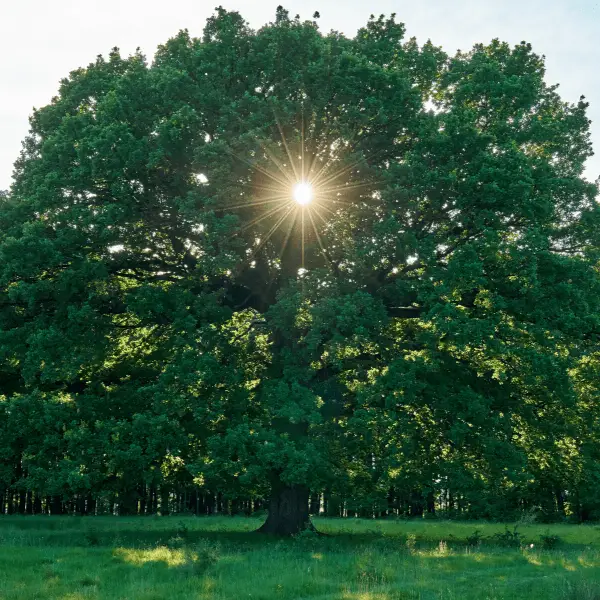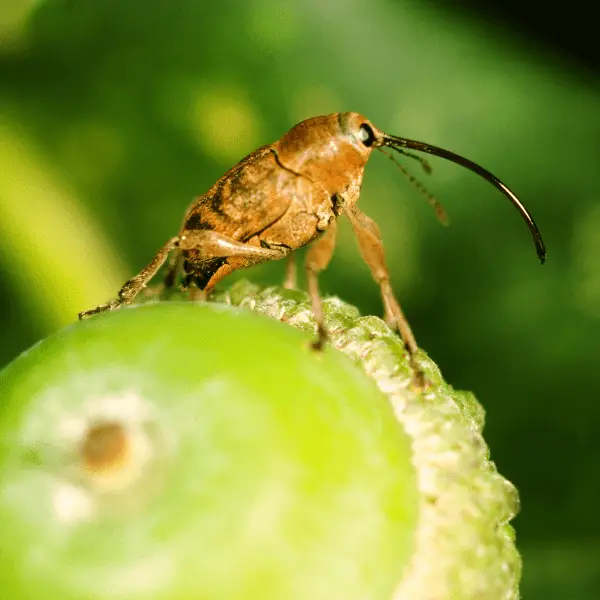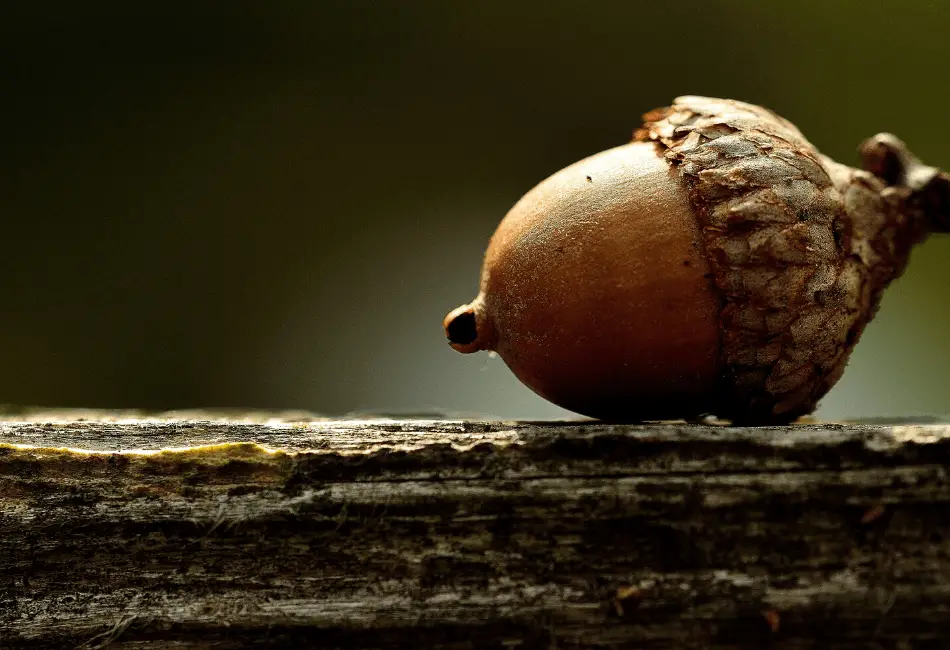Trying to figure what is and what is not a nut is a very confusing topic for many people. For example, the coconut has the word “nut” in its name, yet it is not actually a nut, botanically. Rather, it is a drupe which is a stone fruit with a fleshy exterior that protects a single interior seed. Other drupes include cherries, peaches, and olives. However, as the Library of Congress explains, if we step outside of the strict scientific definition of a coconut, it can be considered a fruit, nut, or a seed.
Fortunately, things are a bit more straightforward for the acorn as we will explain.
Table of Contents
Source of Acorns

Acorns grow on oak trees (genus Quercus). There are 600 species of oaks in the world, all of which produce acorns. The appearance of acorns will vary based on the type of oak it comes from. Generally, acorn production starts when the tree is around 20 to 30 years old. The amount of acorns produced by an oak can greatly fluctuate from year to year. This is partly from the health of the tree, its age (maturity), the environment, and the weather. However, there are regional heavy and light years of acorn production that cannot be fully explained by science.
Acorn a Nut?
Yes, the acorn is a nut. A simplified botanical definition of a nut is a “dry hard fruit that does not split open at maturity to release its single seed”. A more scientific definition of a nut developed by a man named Radford is, “a dry, indehiscent fruit with a hard pericarp, usually derived from a 2-or more carpelled ovary.” Based on these definitions, the acorn is a true nut in botanical terms. In addition to the acorn, other examples of true nuts include pecans, hazelnuts and chestnuts.
Are Acorns Edible?
Acorns are a favorite food of many animals in the wild. This includes squirrels, rodents. and deer to name a few creatures that can be spotted eating them when they fall from an oak tree.
While most modern humans do not harvest or purchase acorns for consumption, they are edible . In fact, they used to be an important part of diets in certain cultures including the indigenous people of North America, particularly in California.
However, before you run to the backyard and start hammering open a bunch of acorns for a late night snack, there is a process to make them palatable. The tannins in raw acorns make them bitter and they can be toxic to humans and some animals including dogs.
You must leach acorns to remove the bitter tasting tannins to prepare them to eat. The two common methods include boiling them twice or soaking them in cold water for several days with repeated water changes as the water browns (see more here). Acorns can make a variety of foods such as bread, porridge, pasta, and much more.
Acorn Bugs

If you decide you want to start collecting acorns to eat, for crafts, or other purposes, be warned that inscents can make their way inside the acorn unnoticed. As Iowa State University Extension and Outreach explains, the acorn weevil (pictured above) uses its long snout to chew a small hole in the acorn where the female lays its eggs. If an egg hatches, a white larva grows inside as it obtains its nutrients from the acorn nut. This is obviously something to look out for since most people rather not consume larvae or have them wiggling around the house. Examine acorns for signs of entry by insects before using them.
When Do Acorns Fall?
Knowing when acorns fall can prepare you for collecting them or cleaning them up. Generally, acorns fall in late summer to autumn. This typically means September to November. However, there are cases of premature dropping of green acorns such as what was reported by WDBJ7 in 2016 in Virginia where large numbers of acorns were falling in July and August.
Do Acorns Sprout?
Acorns that fall to the ground have the potential to sprout and grow into an oak tree. However, the odds of this happening in your backyard are pretty slim. Only 1 out of 10,000 acorns turns into an oak tree. Not ridiculous lottery odds, but still not good.
In your backyard, the acorn has to compete with the existing trees shade, the lawn mower, indiscriminate weeder tools, foot traffic, animals, and much more. It is the acorn that gets taken away by the squirrel and is left intact in an ideal location (likely off the property) that will have the better chance at survival.
Can Acorns Be Composted?
Acorns can be composted with other acceptable material such as unbleached coffee filters, leaves, and grass clippings. However, the problem with composting acorns is their hard outer shell. The shell does not easily break down for decomposition. It can take years for this decaying process to happen naturally.
In order to compost acorns, they should be crushed before adding them to the pile. This will speed up the decomposition process so that you do not have to scoop out whole acorns when the compost is ready to be used. Of course, crushing acorns can be a major hassle, which is why most people prefer to collect them up for the yard waste pickup.
Conclusion
The acorn is undoubtedly a true nut. However, it is not a nut that is widely used for culinary purposes or general eating. We suspect that this is due to the somewhat laborious process of collecting, leaching and cracking the acorns. Once the acorns are processed, the reward just isn’t there for many people in terms of the taste. Our prediction is that acorns will continue to primarily be a tasty treat for the squirrels, bears, and other animals, while humans will continue to opt to deal with the hassle of cleaning them up each fall over harvesting them.


